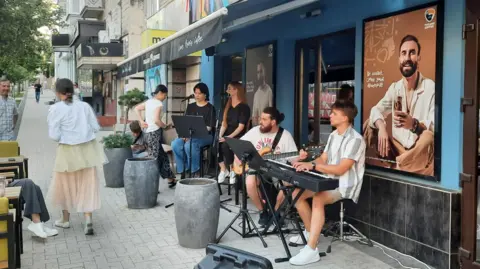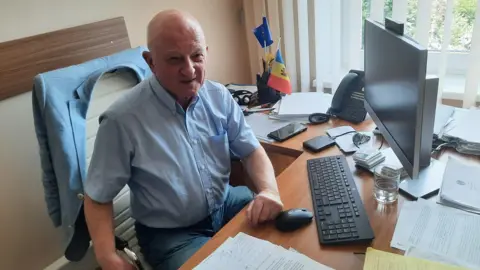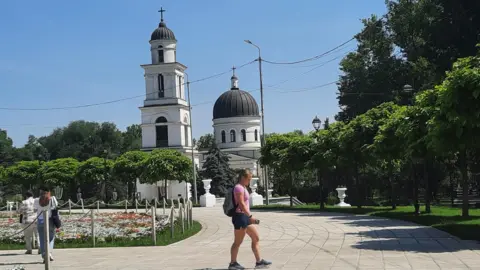For both Moldova and Ukraine, Tuesday, June 25 will be a momentous day, as the European Union embarks on years of talks aimed at incorporating the two countries as new members.
Moldovan President Maia Sandu, a leading advocate for the European path, has set 2030 as her target for joining the EU, but her country faces a long and arduous road to membership.
Chisinau, the capital of Moldova, has the feel of a European city. Young musicians sing Whitney Houston’s “I Wanna Dance with Somebody” outside a trendy restaurant as Moldovans stroll by. However, the city’s buildings reflect its Tsarist, Romanian, and Soviet past alongside its vibrant present.
Moldova’s population of 2.6 million is small by European standards, with one in five people living in the capital.
President Maia Sandu enjoys a strong reputation among EU leaders, not least for her fluency in English and French. She travels to EU summits in economy class and dresses in jeans and sneakers.
It is widely believed that Moldova’s move towards the EU is closely linked to the conflict in neighboring Ukraine. Moldova, one of the poorest countries in Europe, is situated between Ukraine and Romania. It is riddled with corruption and largely sustains itself through remittances sent by its large diaspora across the EU.
Despite Russia’s efforts to discredit Moldova’s European aspirations, the connection with the rest of Europe remains vital.
Earlier this month, President Maia Sandu posted a photo on social media when Moldova’s footballers played against Ukraine in Chisinau. When President Sandu signed a decree last week on EU accession talks, she spoke of Moldova becoming part of a “stronger, more united Europe.”
However, the Kremlin noted that while Moldova is a sovereign state, its “future interests” should also be linked to Russian markets and the “integration processes” of the former Soviet territory.
Despite its Romanian-speaking majority, Moldova is a former Soviet republic, and much of its eastern fringe is home to a pro-Moscow separatist region called Transnistria. When Russia launched its full-scale invasion of Ukraine, Kyiv closed the 452-kilometer (280-mile) border it shares with Transnistria within days.
Russian troops have never left since the breakup of the USSR, and the region is a reminder of Moscow’s long arm in its former republics.
When President Sandu signed last week’s decree, she may have had one eye on two significant votes in October. She aims to be re-elected in the presidential election, and a referendum is being held to enshrine her country’s path to EU membership in the constitution.
Moldova is divided into pro- and anti-EU camps, and its biggest obstacle is Transnistria.
“This problem cannot be solved overnight,” admits pro-government deputy Oazu Nantoi, but now that the border with Ukraine is closed, he is optimistic. “We influence to put pressure on this separatist regime,” he told the BBC. “Joint customs checks are carried out between Moldova and Ukraine at the Cuciurgan border crossing, so Transnistria has become an enclave
 Petru Clej/BBC
Petru Clej/BBC Petru Clej/BBC
Petru Clej/BBC Petru Clej/BBC
Petru Clej/BBC



